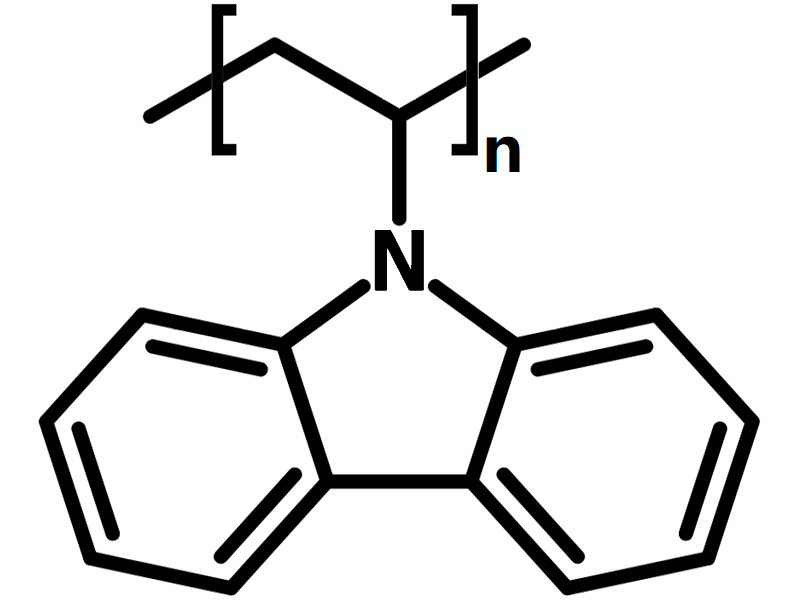Hole Transport Layer Materials, Host Materials, Luminosyn™ Polymers, Materials


Poly(9-vinylcarbazole) (PVK), CAS number 25067-59-8, consisted by linear chains of repeated molecular units (CH2-CH)n with pendant 9H-carbazole side groups, is a well-known p-type thermoplastic π-conjugated semiconducting polymer with high thermal and chemical stability. It has been widely used as hole-transporting and an electron-blocking layer, host polymer for hole-transporting molecules in OLED to enhance the native hole-transporting properties, and blue PLED emitting layer material. PVK has also been used as photoconductive layers in the xerographic industry and memory devices. PVK, as a non-conjugated polymer, shows unique optical properties and hole transport properties in application of organic electronics due to its hydrophobicity, large hole mobility, solution processability and stability.
It is believed that the electrical conduction in PVK is ruled by both field assisted and temperature activated hopping processes, whereas luminescence occurs via radiative decay of a Frenkel exciton. PVK shows an emission spectrum that covers the entire blue region, owing to the properties of pendent carbazole groups.
PVK can be easily produced in large quantities through controlled radical polymerization of 9-vinylcarbazole.
| CAS Number | 25067-59-8 |
| Chemical Formula | (C14H11N)n |
| HOMO / LUMO | HOMO = -5.8 eV, LUMO = -2.2 eV [1] |
| Solubility | THF, Chloroform, chlorobenzene and dichlorobenzene |
| Processing Solvents | o-Xylene, Chloroform, chlorobenzene and dichlorobenzene |
| Full Name | Poly(9-vinylcarbazole) |
| Synonyms | PVK, Poly(n-vinylcarbazole) |
| Classification / Family | Organic semiconducting materials, Large bandgap polymers, Organic photovoltaics, Polymer solar cells, Perovskite solar cells, Hole-transport layer materials, Phosphorescent host materials, OLED |
 Chemical structure of PVK, Poly(9-vinylcarbazole), CAS 25067-59-8
Chemical structure of PVK, Poly(9-vinylcarbazole), CAS 25067-59-8
专业代理国外知名镊子品牌
我们将竭诚为你服务
0755-23003036